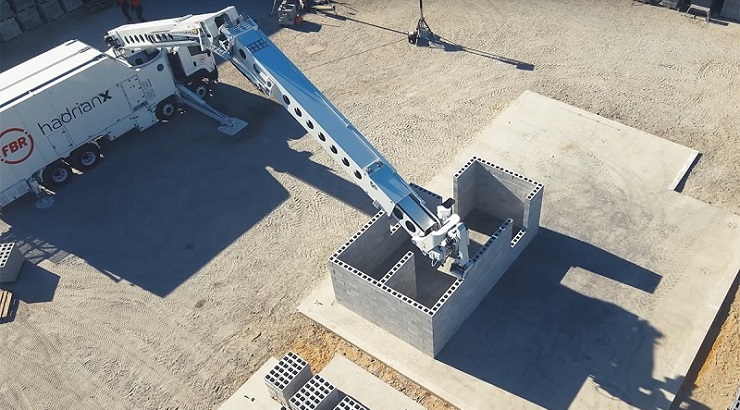Technology
AI-Powered Robot Builds House in Just 24 Hours
PulteGroup, America’s largest homebuilder, piloted Hadrian X on a Florida jobsite.

PulteGroup, one of America’s largest homebuilders, has piloted the use of the Hadrian X system, an AI-guided construction robot, on a Florida site—building an entire house in a day.
The company says the bricklaying robot, developed by the Australia-based automation tech firm FBR Limited (formerly Fastbrick Robotics Limited), was successfully tested for the construction of a Florida residence last month, delivering impressive results.
In particular, PulteGroup hailed the machine’s ability to rapidly construct walls, saying it has proven helpful at a time when the construction industry is grappling with a labour shortage.
“Our industry faces challenges when it comes to labour availability and the need to build more efficiently and sustainably,” Matt Koart, COO of PulteGroup, said in the release.
“We see opportunities to integrate technologies that can improve construction quality and safety, while creating exceptional homes for our customers.”
The test was held at TerraWalk in Babcock Ranch, Florida, a community that PulteGroup says will be the first solar-powered town in the United States.
PulteGroup says the Florida residence is one of 10 homes in the U.S. constructed using the Hadrian X system, highlighting its successful application in the construction industry.
Hadrian X features a telescopic boom mounted to a truck, which is fed a 3D CAD model of a house and goes about laying bricks, along with mortar and adhesive, to build the structure.
RELATED: Bricklaying Robot That Can Build a House in 48 Hours
Although human operators are required to set up and load bricks into the robot, the machine becomes fully autonomous once it is up and running.
Since 2015, engineers at FBR have been making software improvements to speed up Hadrian X. In July 2020, they raised the robot’s performance from 85 bricks an hour before the Covid-19 pandemic to about 150 bricks per hour, and then onward to 200 bricks per hour.
The firm aims to increase performance to 1,000 bricks per hour in the future, surpassing the human record of 915 bricks per hour set in 1987 by American bricklayer Bob Boil.
Mike Pivac, the CEO of FBR, said in 2020 that the company had demonstrated the real commercial viability of the Hadrian X robot, proving it to be economically feasible as well.
“When you consider that manual brick and block laying costs globally vary anywhere from $10 per square metre to $100 per square metre, we are already cost-competitive across a broad range of the market at 200 blocks per hour,” he said in a statement.
On 25 August 2020, Hadrian X completed a pilot deal between FBR and GP Vivienda, a subsidiary of Group GP, one of the largest homebuilders in Mexico. The robot built four Mexican-style homes at FBR’s facility, completing each in under one shift.
A week later, on September 1, 2020, Hadrian X began building its first non-residential commercial structure, located southeast of Perth, Australia.
In May 2022, FBR signed a Memorandum of Understanding with Liebherr-Mischtechnik, a division of the global equipment giant Liebherr Group, to commercialise Hadrian X.
Watch a video of the Hadrian X demo.








